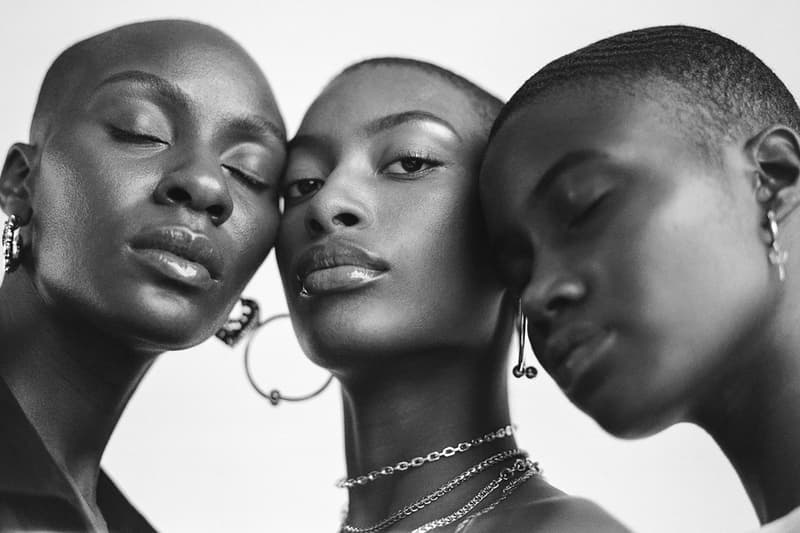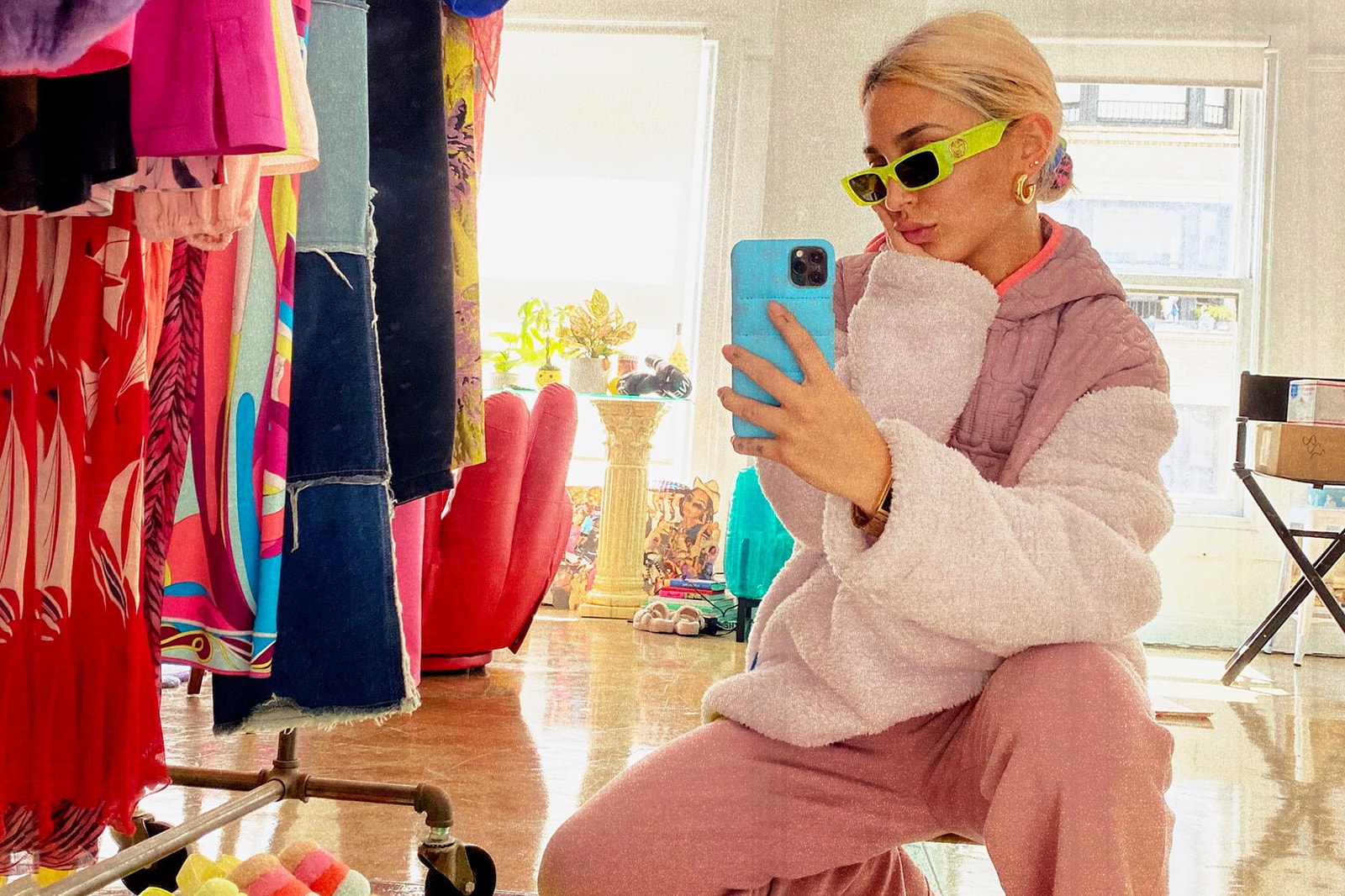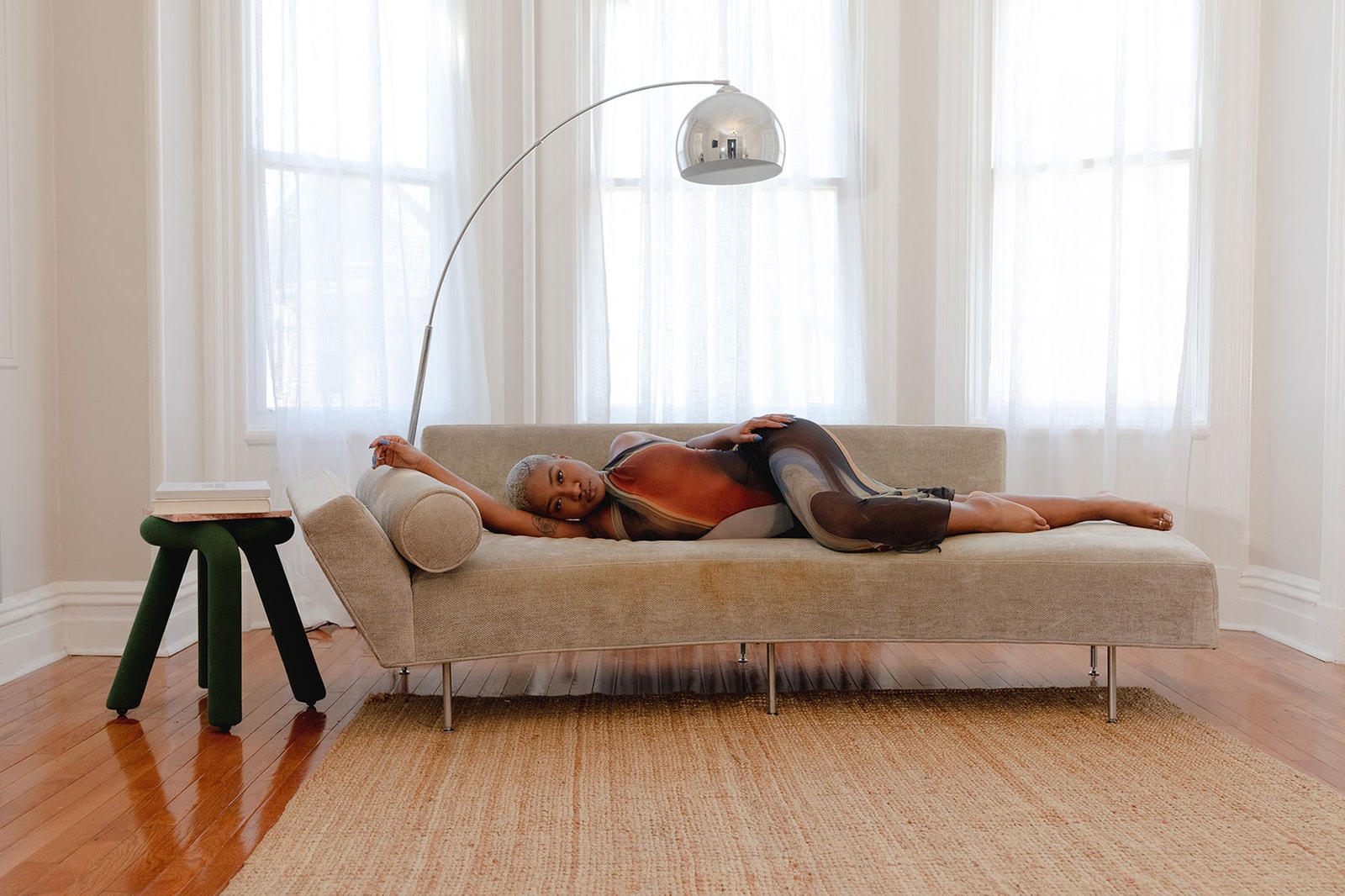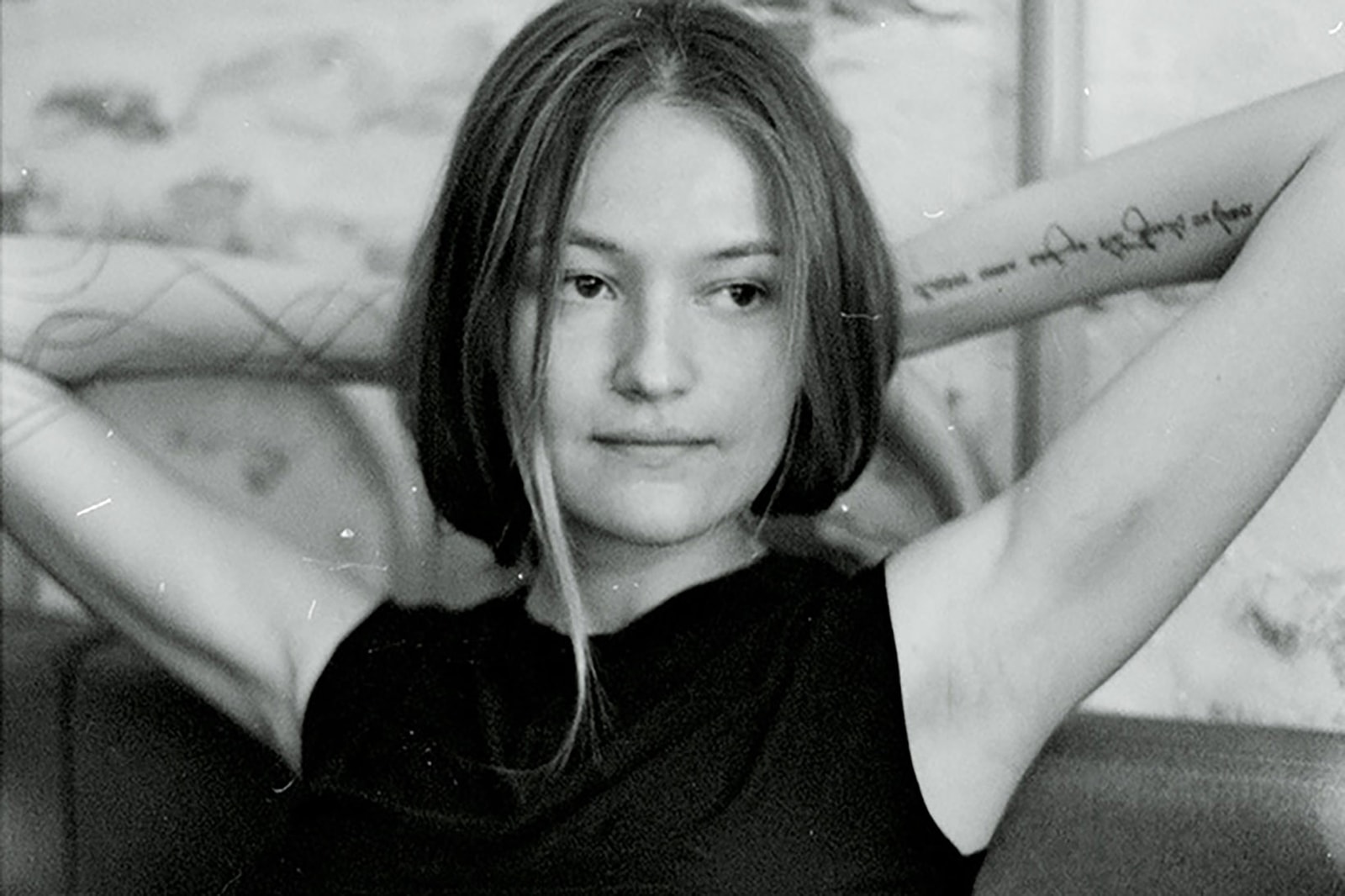 Photography is a powerful art form that can allow one to express a plethora of emotions, themes and messages in one single frame. Producing portraits that capture people’s attention and make an impact, especially in the age of social media when we consume an overwhelming amount of visual content daily, is not an easy task. When an image is able to move someone, however, it becomes all the more rewarding for the photographer.
Photography is a powerful art form that can allow one to express a plethora of emotions, themes and messages in one single frame. Producing portraits that capture people’s attention and make an impact, especially in the age of social media when we consume an overwhelming amount of visual content daily, is not an easy task. When an image is able to move someone, however, it becomes all the more rewarding for the photographer.
In honor of Women’s History Month, we are highlighting the work of three photographers — Amber Asaly, Myesha Evon Gardner and Sasha Samsonova — who use their camera to portray confident, empowered women. By conveying the unique stories of different individuals through their lens, these creatives are exploring and celebrating the complexities of modern womanhood, motherhood and much more.
Get to know Asaly, Gardner and Samsonova, who talk about their creative process, how they establish trust with their subjects and more below.
Amber Asaly
Based in Los Angeles, Amber Asaly is known for photographing her subjects mainly on film. With her highly saturated color aesthetic and wide-angle shots, Asaly has been able to create her own signature style, making her images distinctive. The creative has worked with the likes of Hailey Bieber, Winnie Harlow and Emily Ratajkowski, and has lensed campaigns for brands such as PUMA and Frankies Bikinis.
What got you into photography in the first place?
I took a film photography class in high school. We were all asked to show up to class with a 35mm camera. I always had a camera on me but never a film one, because the aspect of it was foreign to me. I knew nothing about it. My best friend’s dad conveniently collected film cameras. He let us go into this magical room full of cameras and let us pick one out for us to use for class. Little did I know that camera I chose opened the door to the beginning of my career. I was in love with every aspect of film — the viewfinder, the texture, the development process and even the smell of the developing process. I literally loved everything about it. It truly became my third eye.
How do you establish trust with your models and create a safe space for everyone involved in a shoot?
Good energy on set is the most important aspect of a shoot — more than lighting, cameras, lenses and all that technical jazz. Making sure everyone feels comfortable on set is key — not just the model but the whole team. Energy can be felt through the results of my work.
What advice do you have for aspiring photographers out there?
If you want something, you can get it. You just have to be willing to put in the work. Nothing that lasts long-term happens overnight. Long-lasting success is built over time. So with that being said, be okay with being broke for a minute because you need to trust that the outcome will be a success. You have to crawl before you ball. If I can do it, I swear you can too.
On social media, numerous models have recently shared harrowing accounts of alleged sexual harassment or abuse at the hands of photographers they worked with. What do you think needs to change within the industry to stop these situations from happening?
Keep bringing awareness and keep calling them out. F*ck these people in power that think they can take advantage. Stop using art as an outlet to be a creep. It’s 2021, Diet Prada is one DM away from exposing anyone and anything corrupt.
Myesha Evon Gardner
Brooklyn-based art director and photographer Myesha Evon Gardner attained her BFA in graphic design and photography at Parsons School of Design. Since then, Gardner has dedicated her work to highlighting the cultural, social and personal experiences of the Black community through exploring the themes of legacy, love and labor. Most of her visuals arrive in the form of photographic and figurative portraiture, photo documentation, as well as editorial conception.
Who are some of your creative inspirations? How have they influenced the way you see the world through your lens?
My creative inspirations range from legendary photographers like Gordon Parks, Irving Penn, Carrie Mae Weems, Dana Lixenberg, Herb Ritts and Lois Greenfield, to the very mundane. The things that I see in day-to-day life truly inspire how I view the world, because I love to capture stillness in everyday beauty that is often overlooked. This practice is applied to the types of subjects I seek to capture.
Parks is a huge influence for me because his work ranges from sociopolitical — documenting poverty and civil rights — to capturing fashion for Vogue. He was one of my earliest examples to show that there is no one category to lend your eye as a photographer. Beauty is not found, it just is, and I believe that every person, place or thing has a beautiful story that is worth being told. Someone just needs to see that and therein is the true gift of being a photographer.
What kind of stories did you want to tell when you first started out photography?
I was raised in a home with a large family, so naturally, I was drawn to documenting them. I was so enamored with their natural beauty and wanted to showcase what I saw to the world. I spent a lot of my early years capturing portraits of my sisters, Mecca and Myonna. Most of my early work was featured in books that my classmates and I designed, and in group exhibitions where I sold prints. I began receiving awards for my work and being recognized by artist organizations such as Scholastic Art and Writing. By getting that kind of recognition at 16 and 17 years old, it was then that I knew how important it was for me to capture Black women and women of color.
“There are levels of femininity, masculinity, duality and multifaceted-ness that define women through various non-traditional examples and expressions. Being sexually empowered is and should be however a woman chooses to exist.”
What led you to use your lens to portray confident, sexually empowered women?
It is important for me to explore and redefine themes of legacy, labor and love within communities that have been historically left out of the conversation. Motherhood is a subject I frequently focus on within my work. The role of a mother is profoundly complex, and as the person and individual, she/they are often stripped down to a very basic and singular value. Women have an innate strength and, rather traditionally and universally, are expected to give birth and sustain life while holding their world together in every role that they play in life. I question, “Where is that same woman allowed to feel safe and to show those vulnerable moments that require a sense of support?” It is my goal to document there is no one way to be a woman. There are levels of femininity, masculinity, duality and multifaceted-ness that define women through various non-traditional examples and expressions. Being sexually empowered is and should be however a woman chooses to exist.
How do you establish trust with your models and create a safe space for everyone involved in a shoot?
My subjects always have a level of control and agency where they create a safe space for themselves to feel confident in their vulnerability. It is important for me that, first, they feel comfortable in every capacity and, second, for me to always be mindful that they are letting me into that safe space. I love photographing people who say things like, “Well, I’m not a model, so you’ll have to tell me what to do and how to pose,” when in fact, I’m never trying to capture something inauthentic to who they truly are. During an entire session, I have a conversation with my subjects so they are less aware that there is a camera in front of them but there is a person behind that camera that really is dedicated to understanding their journey.
In what unique ways do your images differ from the rest?
My imagery can range from intimate portraits, fashion editorials, movement photos of dancers and documenting everyday life through street photography. I’m most fascinated by subjects who are least expected to be approached or engaged, because those stories often deeply resonate with me. I think it’s important to show people that their stories have value by sparking those conversations, documenting their world and giving them the opportunity to be seen, and possibly even more understood than before.
Is there anything you’re working on this year that you can share with us?
I’m working on an ongoing personal series. Recently, I am most proud of the portrait that I created with an old friend, Jaquea, who was nine months pregnant with her daughter, Love. The series is an exploration of how individuals identify themes of love in their day-to-day life. In this project, I’m highlighting love languages, intimacy, vulnerability and emotional moments of peace in minority communities. The subjects are captured in environments they feel the safest in — whether it’s in their home, car, church, bathroom or wherever they choose. I will be sharing more later in the year.
“Beauty is not found, it just is, and I believe that every person, place or thing has a beautiful story that is worth being told. Someone just needs to see that and therein is the true gift of being a photographer.”
What advice do you have for aspiring photographers out there?
Ultimately, I strongly believe in your life experience being your best teacher. Your perspective makes your eye unique — let your perspective be your guide and influence. Mentorship is also important, but it doesn’t have to be limited to one person nor necessarily someone in the photo industry (one of my first mentors was my grandmother) — rather someone who can pass along a sense of wisdom or enlightenment. Be gentle with yourself, stay true to yourself, become an expert at learning and trying, and photograph the work you want to see in the world. Most importantly, take your time.
Sasha Samsonova
If you didn’t already know, Sasha Samsonova is the woman behind most of Kylie Jenner‘s editorial portraits you see on her Instagram account. Samsonova has also worked with some of Hollywood’s biggest names, including Chrissy Teigen, Lili Reinhart and Emma Roberts. The Ukrainian native used to be a professional ballroom dancer. During a dance championship, she was approached by a ballroom dancer photographer who encouraged her to pursue photography after seeing her work online. Thanks to that encounter, Samsonova went on to photograph for Harper’s Bazaar at 17 years old.
Who are some of your creative inspirations? How have they influenced the way you see the world through your lens?
I absolutely love David Fincher, Quentin Tarantino and Charlie Kaufman when thinking of movies that created a basis for my creative taste. Helmut Newton will forever yield a powerful influence on my photography. Over the years, the list of my favorite photographers have changed and shrunk. Don’t get me wrong, I admire the work of so many artists, but no one stays in my brain quite like Newton.
How do you establish trust with your models and create a safe space for everyone involved in a shoot?
I talk to my models, a lot. While they are in the makeup chair, we normally chat about the shoot and about whatever else comes to mind. I appreciate and adore my models, and I try to communicate that from the get-go. I make sure I walk them through our day and what’s happening in my head with ideas for the shoot. I’ll talk to them about how dressed or nude they would feel comfortable being during the shoot, and never push for anything that doesn’t feel right to them. I show what I want in terms of posing by using my own body. I’m constantly communicating and screaming out all kinds of little compliments from behind the camera when we find a good moment together. We have fun and we keep a very chill vibe.
“I’ve felt incredibly inspired by models who are a bit more mature and ladies who are curvy in all their glory. This shift in the industry feels liberating and beautiful.”
How do body positivity and diversity play a part in your image-making?
For the past couple of years, I’ve felt incredibly inspired by models who are a bit more mature and ladies who are curvy in all their glory. This shift in the industry feels liberating and beautiful. It shapes my photography by inviting new subjects in the lens and those have been some of my favorite shoots lately.
Can you walk us through your creative process?
It’s a scattered mess if I’m working on a personal project, and a perfect step-by-step process if I’m working on a specific job. However, I normally always start with finding a random source of inspiration like the Martian surface or the rainforest, and then I bring myself back to Earth and start thinking about how do I combine these broad things I love with the reality of a photoshoot. I’ll pick out details that speak to me the most about the environment I’m envisioning and the latent for a given shoot, and try to find a world that could fit both perfectly.
On social media, numerous models have recently shared harrowing accounts of alleged sexual harassment or abuse at the hands of photographers they worked with. What do you think needs to change within the industry to stop these situations from happening?
This is a really tough and sensitive topic for me. The problem is it’s happening everywhere, and I’ve had my fair share of these “experiences.” I’m not a model but a woman. I don’t know how to stop it from happening unless we start talking and thinking about women completely differently. Unless we make a fundamental shift as people. I understand the specific question about the photographer-model dynamic, but it’s impossible to comprehend what needs to be happening in a photographer’s head to feel like they are somehow in a position to act this way. I mean, just the thought in my head sounds so disgusting and obnoxious.
What advice do you have for aspiring photographers out there?
Don’t box yourself in one “kind” of photography. Be open, look for what makes you skip a beat and don’t be afraid to abandon fashion photography for a while. Just remember that your vision applies to everything you see, not just when you are on set and expected to perform.




No comments:
Post a Comment